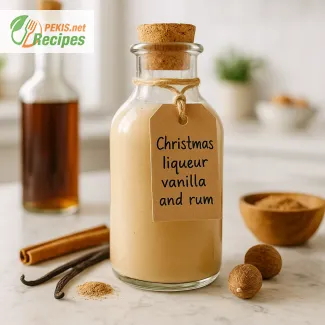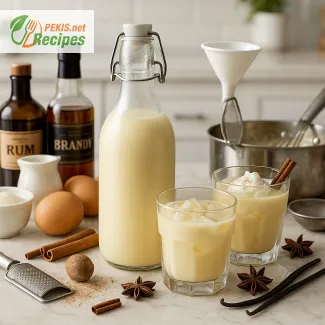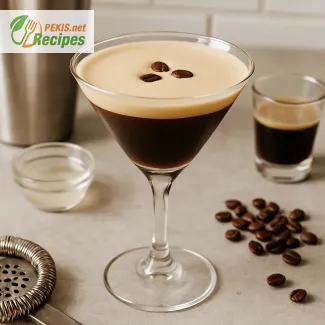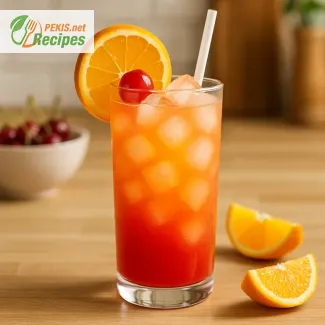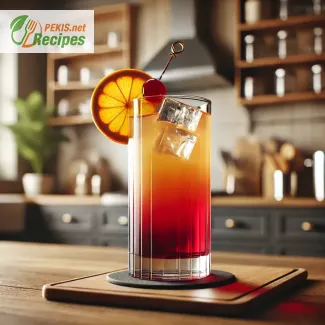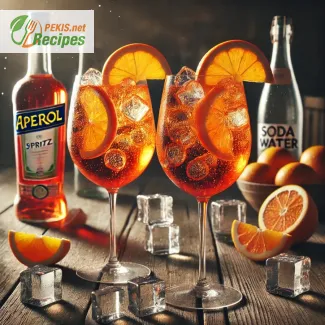
Mastering the Aperol Spritz: A Refreshing Balance of Flavor and Tradition
Discover the iconic Italian cocktail that defines effortless summer indulgence
When it comes to refreshing cocktails that embody the spirit of laid-back elegance, few drinks rival the charm of the Aperol Spritz. Recognizable by its vibrant orange hue and delicate effervescence, this beloved Italian aperitivo has earned a permanent place on terraces, patios, and brunch tables around the world. Rooted in the northern Italian tradition of pre-dinner drinks, the Aperol Spritz is more than just a cocktail — it's a cultural ritual designed to awaken the appetite, spark conversation, and celebrate the moment.
Its simple yet distinctive 3‑2‑1 formula — three parts Prosecco, two parts Aperol, one part soda water — delivers a harmonious blend of bittersweet orange, herbal complexity, and bubbly lightness. This elegant ratio is easy to remember, simple to mix, and consistently delivers the perfect sip every time.
The Italian aperitivo culture behind the spritz
To understand the Aperol Spritz, one must first appreciate the Italian concept of aperitivo. This cherished custom bridges the gap between work and dinner with drinks and small bites, inviting people to slow down and enjoy the transition into evening. Originating in Venice and the surrounding Veneto region, the spritz became a staple of aperitivo hours as early as the 1800s, when Austro-Hungarian soldiers reportedly diluted local wines with a “spritz” of water.
It wasn’t until the 1950s, however, that Aperol — a bright orange apéritif created by the Barbieri brothers in 1919 — was blended with Prosecco and soda water to form the now-iconic combination. Today, ordering an Aperol Spritz in Italy is as common as asking for a glass of wine, and its international popularity continues to rise as people seek light, low-alcohol cocktails that don’t compromise on taste.
What makes the perfect Aperol Spritz?
The key to a great Aperol Spritz lies in its balance of flavor and presentation. A properly made spritz should be served in a large wine glass filled with ice, topped with a generous orange slice to enhance both aroma and visual appeal. The bittersweetness of Aperol is offset by the dry, bubbly character of Prosecco, while soda water introduces a gentle sparkle that keeps the drink light and refreshing.
The beauty of the 3‑2‑1 ratio is that it scales effortlessly and leaves room for personalization. Prefer a slightly stronger flavor? Use a splash less soda. Want something more effervescent? Add extra bubbles. However you tweak it, the Aperol Spritz remains one of the most forgiving — and rewarding — cocktails in any home bartender’s repertoire.
Aperol: The star ingredient explained
Central to the Spritz’s appeal is Aperol itself — a bright, herbal apéritif with low alcohol content (11%) and a complex profile built around sweet and bitter orange, rhubarb, and a secret blend of botanicals. Its low ABV makes it ideal for daytime drinking and social gatherings where lighter sips are preferred.
Unlike many bitter liqueurs, Aperol is notably smooth and accessible, making it a favorite even among those who typically shy away from herbal spirits. It imparts a vivid color and unmistakable flavor that defines the Spritz, while remaining versatile enough for use in other cocktails and modern variations.
Pairing the Aperol Spritz with food
One of the reasons the Aperol Spritz has become a staple at summer gatherings is its compatibility with a wide range of foods. Its crisp bitterness cuts through rich dishes, while its subtle sweetness complements lighter fare. Traditionally, it’s paired with small appetizers such as olives, cured meats, or crostini — but it also shines alongside seafood, salads, or even a casual pizza night.
Because it doesn’t overpower the palate, the Spritz is an ideal companion throughout a multi-course meal or as a prelude to dinner. Whether enjoyed at a garden party or as part of a casual weekend brunch, its versatility ensures it always feels at home.
Global rise of a modern classic
Though deeply rooted in Italian tradition, the Aperol Spritz has gone global. Its visually striking color and photogenic composition have helped make it a darling of social gatherings and outdoor events from New York to Sydney. It has become especially popular in the UK, Germany, and the United States, where it’s seen as a go-to summer cocktail for those seeking sophistication without formality.
Bartenders have embraced its adaptability, too — creating spin-offs with grapefruit, elderflower, and even spicy infusions to suit local palates. Despite the creativity, the original 3‑2‑1 recipe remains the gold standard, proving that simplicity often reigns supreme.
Why the 3‑2‑1 formula works so well
The classic Aperol Spritz owes much of its success to its mathematical precision. The 3 parts Prosecco provide the foundation with dry, fruity bubbles. The 2 parts Aperol contribute the signature flavor and color, while the 1 part soda water lightens the mix just enough to keep it refreshing and sessionable.
This balance ensures that no one element dominates the drink, making it ideal for a broad audience. The formula is not only easy to memorize but also delivers a consistently enjoyable experience, whether you're sipping at a beach bar or preparing it at home with friends.
Setting the mood: glassware, garnishes, and atmosphere
An Aperol Spritz is more than a drink — it’s an experience. To elevate that experience, presentation matters. Serve it in a large balloon wine glass or stemmed goblet, allowing room for ice and garnish. The classic orange wedge is not just decorative; it enhances the aroma with every sip.
Add a metal straw, a touch of fresh mint, or even a dash of sparkling grapefruit soda for a modern twist. Most importantly, enjoy it in good company, ideally outdoors, under the sun or stars. The Aperol Spritz isn’t just about refreshment — it’s about setting the tone for unforgettable moments.
A timeless drink for every season
While commonly associated with summer, the Aperol Spritz is a year-round delight. Its vibrant color and crisp taste bring a touch of sunshine even to the coldest days. In winter, it offers a nostalgic nod to warmer evenings; in spring, it pairs perfectly with blooming gardens and fresh herbs.
With just a few ingredients and a minute of your time, the Aperol Spritz transforms ordinary gatherings into celebratory ones — and captures the essence of Italian hospitality in a glass.
- Fill glasses with ice: Use large wine glasses or goblets and fill them generously with ice cubes to chill the drink properly and keep it crisp.
- Pour Prosecco: Add 90 ml (3 fl oz) of chilled dry Prosecco into each glass. Pour slowly to retain the bubbles.
- Add Aperol: Carefully measure 60 ml (2 fl oz) of Aperol into each glass. Pour gently to layer over the Prosecco.
- Top with soda water: Add 30 ml (1 fl oz) of soda water into each glass. Do not stir vigorously – a gentle swirl is enough to blend.
- Garnish and serve: Place a fresh slice of orange on the rim or directly into the glass. Serve immediately while cold.
Elevating the Aperol Spritz: Creative Twists and Smart Cocktail Techniques
Simple enhancements that make a big impact on taste, balance, and presentation
The Aperol Spritz is loved for its simplicity, but that doesn’t mean it can’t be refined or personalized. While the classic 3‑2‑1 ratio (Prosecco, Aperol, soda water) forms a balanced and refreshing base, there are numerous ways to upgrade this Italian staple with subtle adjustments in technique, ingredient quality, or even visual presentation. Whether you're aiming to amplify flavor, reduce sugar, or simply make it your own, these professional tips will help you improve every glass you pour.
Choosing better ingredients for elevated flavor
Every element in an Aperol Spritz plays a role in its final taste. By upgrading the core ingredients, you dramatically improve both complexity and satisfaction.
Prosecco: Always use a dry (Brut) Prosecco, ideally from Valdobbiadene or Conegliano. These DOCG regions produce higher-quality sparkling wines with delicate floral and green apple notes. Avoid sweeter styles (Extra Dry or Dry), as they can overpower Aperol's bittersweet profile and create an unbalanced drink.
Aperol: While Aperol itself doesn’t vary in quality, ensure it’s fresh and properly stored. Exposure to sunlight or heat dulls its flavor. You can also try replacing a small portion of Aperol (10–15 ml) with Campari or a similar bitter liqueur to add depth and reduce sweetness.
Soda water: Use high-carbonation soda from a freshly opened bottle. Low-fizz or flat soda will make the drink heavy and lifeless. Some bartenders use tonic water or sparkling mineral water for a different finish, but these alternatives alter the taste and sweetness considerably.
Enhancing presentation and aroma
Small changes in garnish and glassware can elevate the experience from casual to professional.
Glass choice: A wide wine glass with a thin rim enhances the perception of aromas. If serving to impress, chill the glass beforehand to keep the drink cooler longer.
Ice quality: Use large, clear ice cubes that melt slowly. Cloudy or crushed ice dilutes the drink too quickly and mutes the herbal flavors.
Garnishes: The traditional orange slice is ideal, but you can also experiment with blood orange, grapefruit peel, or even a sprig of fresh thyme or basil for aromatic variation. Herbs should be gently slapped before adding to release essential oils.
Making it healthier without compromising taste
If you're looking to reduce calories or sugar, the Aperol Spritz offers multiple easy tweaks.
Lower the Aperol amount: Reducing Aperol from 2 parts to 1.5 still provides color and flavor while cutting back on sugar.
Use dry sparkling wine alternatives: Swap Prosecco with Cava or Crémant with zero dosage (no added sugar) for a cleaner finish.
Soda alternatives: Try infused sparkling water with citrus or cucumber essence. This keeps the cocktail bright while adding new layers of refreshment without extra sugar or calories.
Add fresh citrus juice: A splash of fresh orange juice or lemon juice adds natural acidity and brightness while reducing reliance on sweet elements.
Creative flavor variations worth trying
For those wanting to reimagine the classic while keeping its integrity, consider these popular modern twists:
Spicy Aperol Spritz: Add a slice of fresh jalapeño or a few drops of chili tincture to create contrast with the sweetness.
Elderflower Spritz: Replace half the Aperol with St‑Germain liqueur. The floral notes blend beautifully with Prosecco and bring a spring-like quality to the drink.
Rhubarb Spritz: Mix in a dash of rhubarb syrup or swap Aperol with a rhubarb-forward apéritif for a sharper bite and striking pink color.
Berry Spritz: Muddle fresh raspberries or strawberries before adding Aperol. This adds a juicy dimension and natural sweetness, ideal for summer brunches.
Common mistakes to avoid
A well-executed Aperol Spritz is effortless to drink, but poor technique can ruin the experience. Here are the most frequent missteps and how to avoid them:
Wrong order of pouring: Always start with Prosecco first, then Aperol, then soda water. Reversing the order can cause the Aperol to sink and result in an uneven mix.
Stirring too aggressively: A light swirl is enough to combine ingredients. Over-stirring releases carbonation too quickly and flattens the drink.
Overloading with ice: While ice is essential, too much can crowd the glass and affect the proportions. Aim for 4–5 medium cubes or 2 large blocks.
Poor-quality Prosecco: Cheap, overly sweet sparkling wine makes the drink cloying and unbalanced. Stick with dry, crisp bottles — the base matters.
Serving warm: Aperol Spritz is meant to be ice-cold. Warm ingredients result in a flabby, flat cocktail. Chill all components, including the glass, in advance.
Why homemade is better than pre-mixed
While bottled or canned spritz options exist, they rarely match the balance and freshness of a homemade Aperol Spritz. Preparing it yourself allows:
- Control over sweetness and bitterness
- Adjustment of carbonation levels
- Customization with seasonal garnishes
- Use of higher-quality wine and water
Pre-mixed options also often include stabilizers or preservatives, which can slightly dull the flavor. A freshly made Spritz not only tastes better but also feels more personal and celebratory.
Ideal occasions and seasonal pairings
The Aperol Spritz fits seamlessly into a variety of occasions — from sunny afternoon aperitivos to elegant rooftop gatherings. But it can also be tailored for different settings:
- Winter: Add a rosemary sprig and a cinnamon-dusted orange slice for a holiday touch.
- Spring: Serve with fresh edible flowers or herbs for a light, floral twist.
- Fall: Try blood orange and a splash of amaro for depth and autumnal richness.
Pair with small bites like marinated olives, cheese boards, or crispy crostini topped with burrata or smoked salmon for a well-rounded aperitivo experience.
By understanding its components and the opportunities for variation, the Aperol Spritz can evolve beyond a trend into a signature cocktail that reflects your personal taste and creative flair. Whether you stay faithful to the classic or embrace seasonal adaptations, each glass has the potential to be both refreshing and memorable.
Allergens present in the recipe:
- Sulfites: Present in Prosecco and Aperol.
How to eliminate allergens and gluten:
- Sulfites: Cannot be fully removed, but using organic Prosecco and a low-sulfite aperitif may reduce sulfite content.
- Gluten: This recipe is naturally gluten-free. Always verify that the Aperol and Prosecco used are certified gluten-free.
Vitamins and minerals per serving (approximate):
- Vitamin C: 10 mg – Supports immune function and antioxidant defense.
- Potassium: 100 mg – Helps regulate fluid balance and muscle function.
- Magnesium: 5 mg – Contributes to nerve and muscle relaxation.
- Calcium: 8 mg – Aids in maintaining bone structure.
Antioxidants per serving (approximate):
- Flavonoids (from orange): 20 mg – May reduce inflammation and support heart health.
- Beta-carotene (trace): ~0.1 mg – Supports vision and immune function.
- Polyphenols (from Aperol botanicals): ~15 mg – Contribute to cardiovascular protection.
